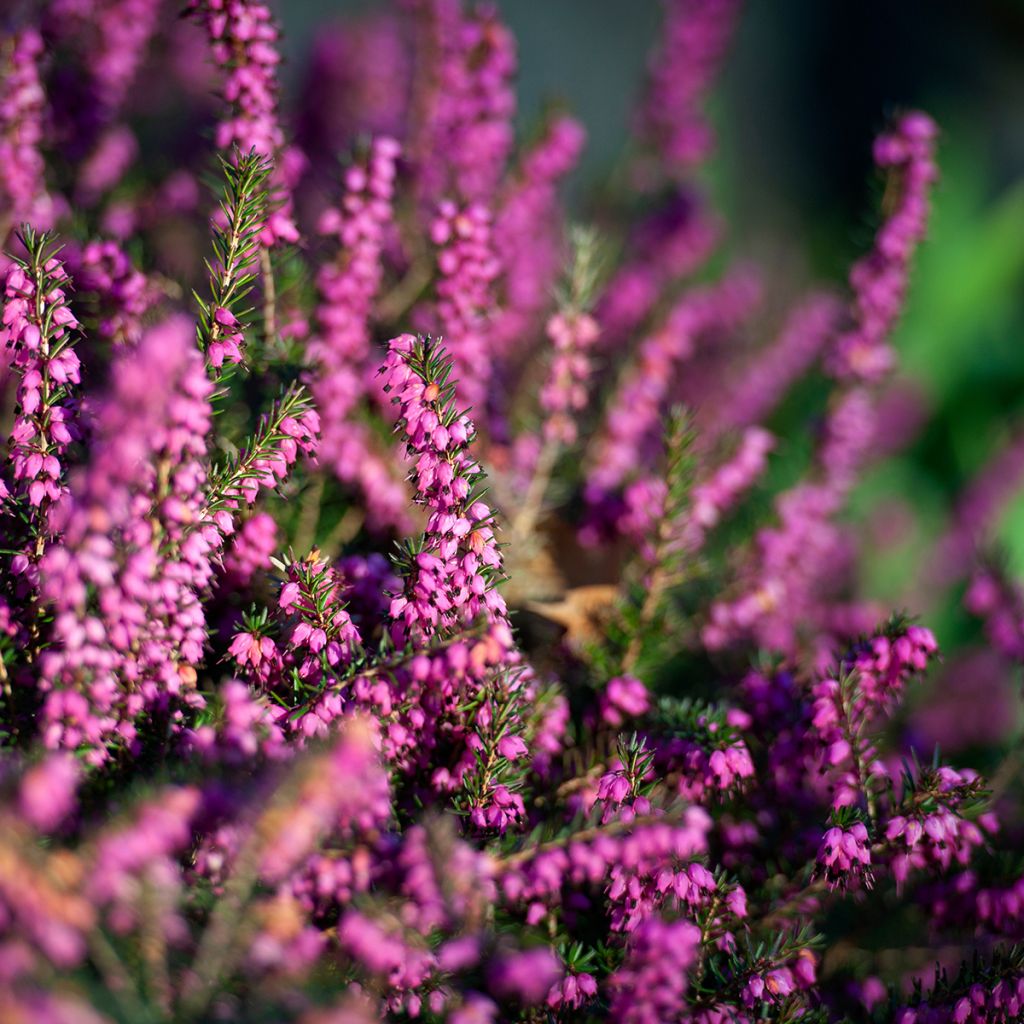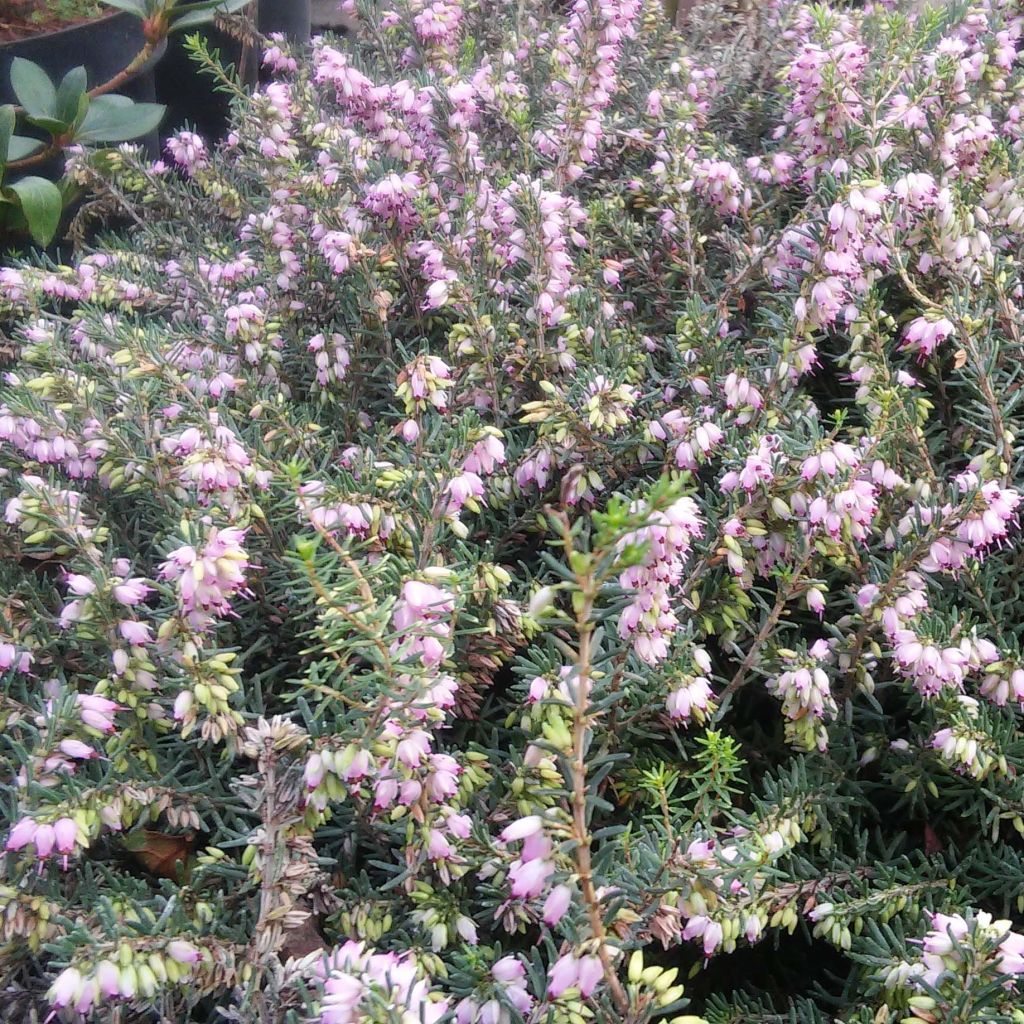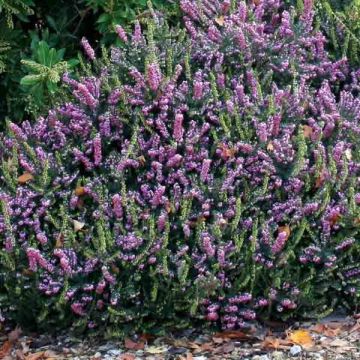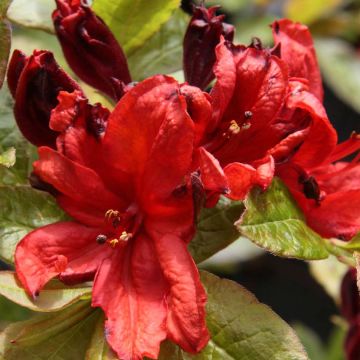

Erica x darleyensis Darley Dale


Erica x darleyensis Darley Dale


Erica x darleyensis Darley Dale


Erica x darleyensis Darley Dale


Erica x darleyensis Darley Dale


Erica x darleyensis Darley Dale
Erica x darleyensis Darley Dale
Erica x darleyensis Darley Dale
Winter Heath, Spring Heath, Snow Heather, Alpine Heath
This item cannot be shipped to the selected country
Delivery charge from €5.90
Delivery charge from €5.90
More information
Schedule delivery date,
and select date in basket
This plant carries a 24 months recovery warranty
More information
We guarantee the quality of our plants for a full growing cycle, and will replace at our expense any plant that fails to recover under normal climatic and planting conditions.
From €5.90 for pickup delivery and €6.90 for home delivery
Express home delivery from €8.90.
From €5.90 for pickup delivery and €6.90 for home delivery
Express home delivery from €8.90.
Does this plant fit my garden?
Set up your Plantfit profile →
Description
Winter heather Erica x darleyensis 'Darley Dale' is an old variety that is still appreciated for its vigour, floribundity, and ease of cultivation. Spreading on the ground to form a large, flowering cushion, this heather is covered in small bell-shaped, soft pink-lilac flowers in the heart of winter when the garden lacks animation. Its young shoots are spotted with cream and enhance the charm of this shrub adorned with small, evergreen, dark green leaves. This hardy and accommodating heather will find a place in every garden. By combining different varieties with staggered flowering, heathers create a patchwork of colour for 6 to 7 months in the garden or in pots, even in slightly chalky and dry soil.
Erica x darleyensis 'Darley Dale' is a British horticultural creation dating back to 1900. It is the result of cross-breeding between Erica carnea, native to mountainous areas of southern and central Europe and thriving on limestone soil, and Erica erigena, acid-loving and native to western Europe. This hybrid combines vigorous growth, beautifully coloured young foliage, and abundant, prolonged flowering. This small, evergreen shrub, with a rounded and spreading habit, will reach approximately 40-50 cm (15.7-19.7 in) in height and 60-70 cm (23.6-27.6 in) in width at maturity, with a fairly slow growth rate. Its lifespan is about 10 to 15 years. 'Darley Dale' generally flowers for several weeks between November and March-April, depending on the climate. Its flowers are small urns that quickly change from greenish-white to pastel pink with white markings. These 3 mm (0.1 in) long flowers are gathered in clusters that are 3 to 10 cm (1.2 to 3.9 in) long and are scattered along the branches, amidst linear, obtuse leaves that are 3 to 10 mm (0.1 to 0.4 in) long and arranged in an opposite manner. The young foliage of this variety is light green with white-cream spots, becoming dark green when mature.
Hardy and undemanding of soil type, it is a sturdy shrub, ideal for winter heather beds, along with other varieties, such as the 'Silberschmelze', white and snowy, or 'Kramer's Rote', a bright carmine pink. Darley heather also makes an excellent ground cover, whether alone or combined with dwarf creeping conifers (Juniperus squamata 'Blue Star', Juniperus horizontalis 'Blue Chip', J.repanda...), or ground cover plants like silver basket or wall bellflower (Campanula portenschlagiana), for example. It also helps occupy the front of beds, bringing them to life throughout the year, especially in winter.
Report an error about the product description
Erica x darleyensis Darley Dale in pictures




Plant habit
Flowering
Foliage
Botanical data
Erica
x darleyensis
Darley Dale
Ericaceae
Winter Heath, Spring Heath, Snow Heather, Alpine Heath
Cultivar or hybrid
Other Heather
Planting and care
Erica darleyensis 'Darley Dale' enjoys full sun, which enhances its flowering, and can grow in any type of soil, even clayey or slightly chalky, as long as it is well-drained and deep. Once well established, it can withstand anything, but its planting must be careful and it should be watered during the first two years: if the root ball dries out while the root system is still underdeveloped, the plant will die. Conversely, excessively wet soil, especially in case of high heat, can promote the development of a fungus called Phytophthora which, once established, will kill this heather.
During planting it is advisable to loosen the root ball a little, trim the excessively long roots, then plant in a 30x30 cm (11.8 in) hole filled with a mixture of compost, ericaceous soil, and garden soil. Water it once or twice a week to keep the soil moist while the plant establishes itself. To maintain a compact habit and increase the lifespan of the heather, it is useful to prune the faded branches to 2-5 cm (0.8-2 in) from the previous year's growth, every year after flowering, making sure not to cut below the last green leaves. Erica can also be susceptible to phythium and rhizoctonia during hot and humid periods. Feeding is not necessary, it is even discouraged, in order not to promote foliage production at the expense of flowering (heathers are generally plants of poor soils).
Planting period
Intended location
Care
-
, onOrder confirmed
Reply from on Promesse de fleurs
Evergreen shrubs
Haven't found what you were looking for?
Hardiness is the lowest winter temperature a plant can endure without suffering serious damage or even dying. However, hardiness is affected by location (a sheltered area, such as a patio), protection (winter cover) and soil type (hardiness is improved by well-drained soil).

Photo Sharing Terms & Conditions
In order to encourage gardeners to interact and share their experiences, Promesse de fleurs offers various media enabling content to be uploaded onto its Site - in particular via the ‘Photo sharing’ module.
The User agrees to refrain from:
- Posting any content that is illegal, prejudicial, insulting, racist, inciteful to hatred, revisionist, contrary to public decency, that infringes on privacy or on the privacy rights of third parties, in particular the publicity rights of persons and goods, intellectual property rights, or the right to privacy.
- Submitting content on behalf of a third party;
- Impersonate the identity of a third party and/or publish any personal information about a third party;
In general, the User undertakes to refrain from any unethical behaviour.
All Content (in particular text, comments, files, images, photos, videos, creative works, etc.), which may be subject to property or intellectual property rights, image or other private rights, shall remain the property of the User, subject to the limited rights granted by the terms of the licence granted by Promesse de fleurs as stated below. Users are at liberty to publish or not to publish such Content on the Site, notably via the ‘Photo Sharing’ facility, and accept that this Content shall be made public and freely accessible, notably on the Internet.
Users further acknowledge, undertake to have ,and guarantee that they hold all necessary rights and permissions to publish such material on the Site, in particular with regard to the legislation in force pertaining to any privacy, property, intellectual property, image, or contractual rights, or rights of any other nature. By publishing such Content on the Site, Users acknowledge accepting full liability as publishers of the Content within the meaning of the law, and grant Promesse de fleurs, free of charge, an inclusive, worldwide licence for the said Content for the entire duration of its publication, including all reproduction, representation, up/downloading, displaying, performing, transmission, and storage rights.
Users also grant permission for their name to be linked to the Content and accept that this link may not always be made available.
By engaging in posting material, Users consent to their Content becoming automatically accessible on the Internet, in particular on other sites and/or blogs and/or web pages of the Promesse de fleurs site, including in particular social pages and the Promesse de fleurs catalogue.
Users may secure the removal of entrusted content free of charge by issuing a simple request via our contact form.
The flowering period indicated on our website applies to countries and regions located in USDA zone 8 (France, the United Kingdom, Ireland, the Netherlands, etc.)
It will vary according to where you live:
- In zones 9 to 10 (Italy, Spain, Greece, etc.), flowering will occur about 2 to 4 weeks earlier.
- In zones 6 to 7 (Germany, Poland, Slovenia, and lower mountainous regions), flowering will be delayed by 2 to 3 weeks.
- In zone 5 (Central Europe, Scandinavia), blooming will be delayed by 3 to 5 weeks.
In temperate climates, pruning of spring-flowering shrubs (forsythia, spireas, etc.) should be done just after flowering.
Pruning of summer-flowering shrubs (Indian Lilac, Perovskia, etc.) can be done in winter or spring.
In cold regions as well as with frost-sensitive plants, avoid pruning too early when severe frosts may still occur.
The planting period indicated on our website applies to countries and regions located in USDA zone 8 (France, United Kingdom, Ireland, Netherlands).
It will vary according to where you live:
- In Mediterranean zones (Marseille, Madrid, Milan, etc.), autumn and winter are the best planting periods.
- In continental zones (Strasbourg, Munich, Vienna, etc.), delay planting by 2 to 3 weeks in spring and bring it forward by 2 to 4 weeks in autumn.
- In mountainous regions (the Alps, Pyrenees, Carpathians, etc.), it is best to plant in late spring (May-June) or late summer (August-September).
The harvesting period indicated on our website applies to countries and regions in USDA zone 8 (France, England, Ireland, the Netherlands).
In colder areas (Scandinavia, Poland, Austria...) fruit and vegetable harvests are likely to be delayed by 3-4 weeks.
In warmer areas (Italy, Spain, Greece, etc.), harvesting will probably take place earlier, depending on weather conditions.
The sowing periods indicated on our website apply to countries and regions within USDA Zone 8 (France, UK, Ireland, Netherlands).
In colder areas (Scandinavia, Poland, Austria...), delay any outdoor sowing by 3-4 weeks, or sow under glass.
In warmer climes (Italy, Spain, Greece, etc.), bring outdoor sowing forward by a few weeks.
























































